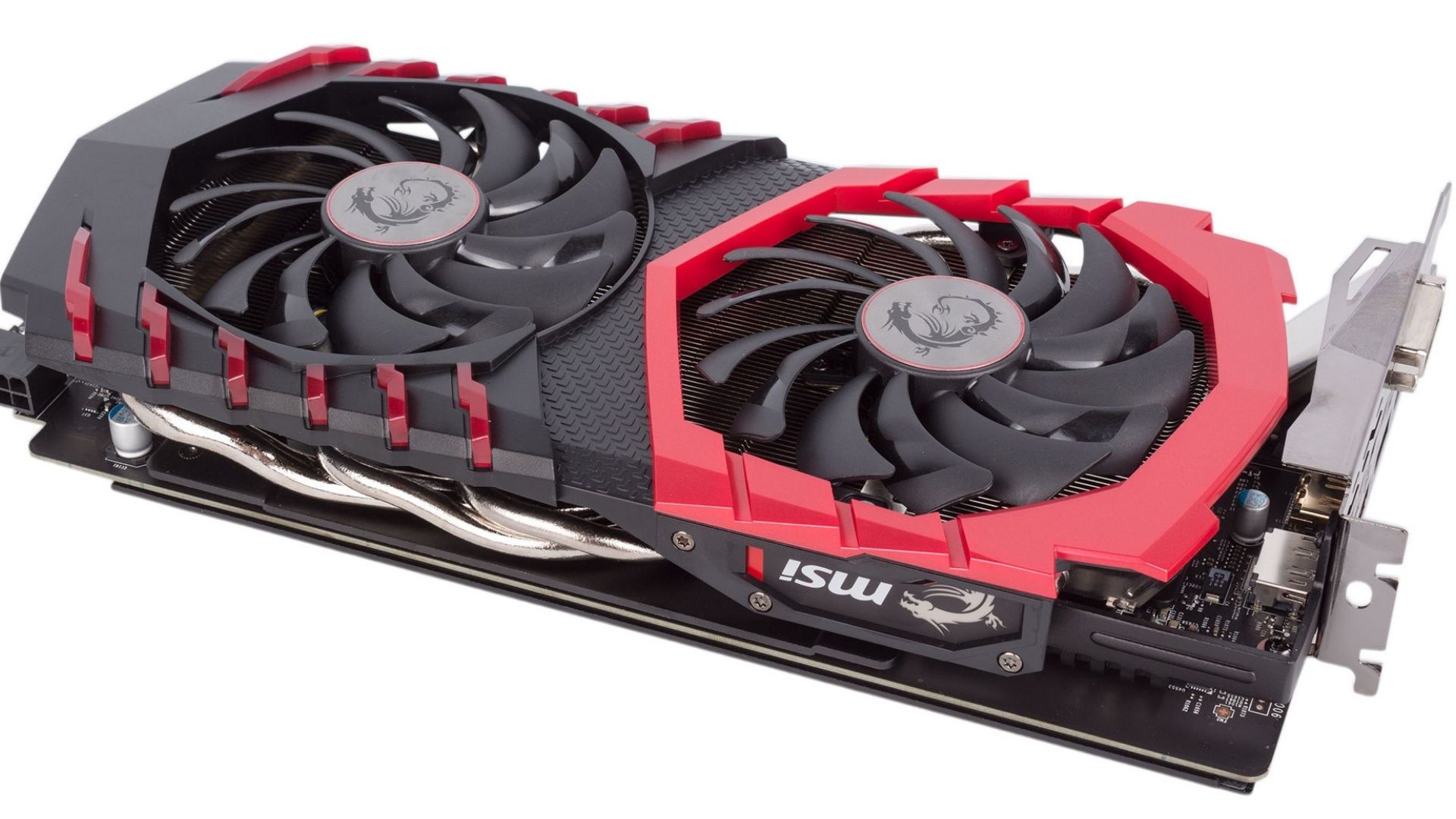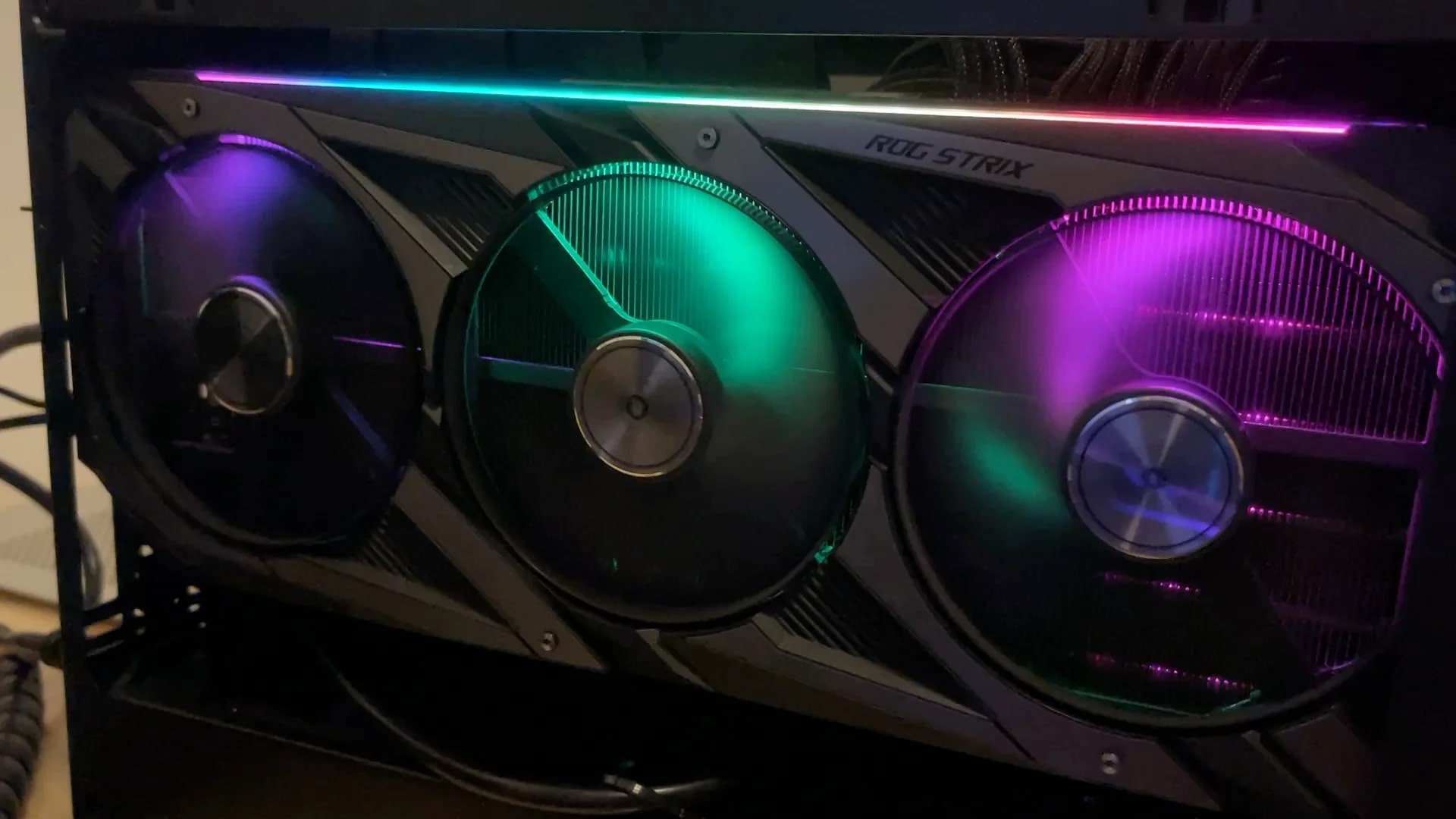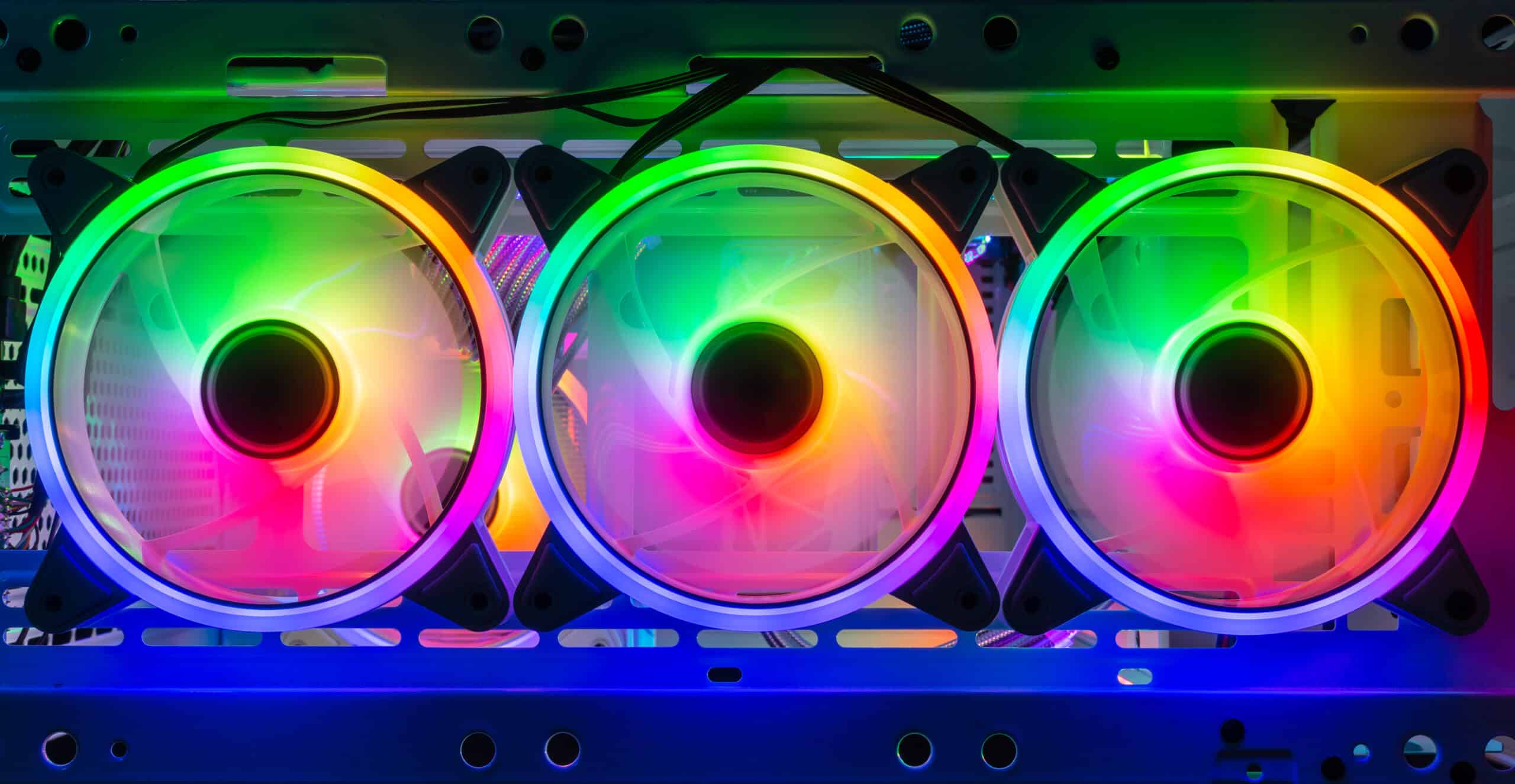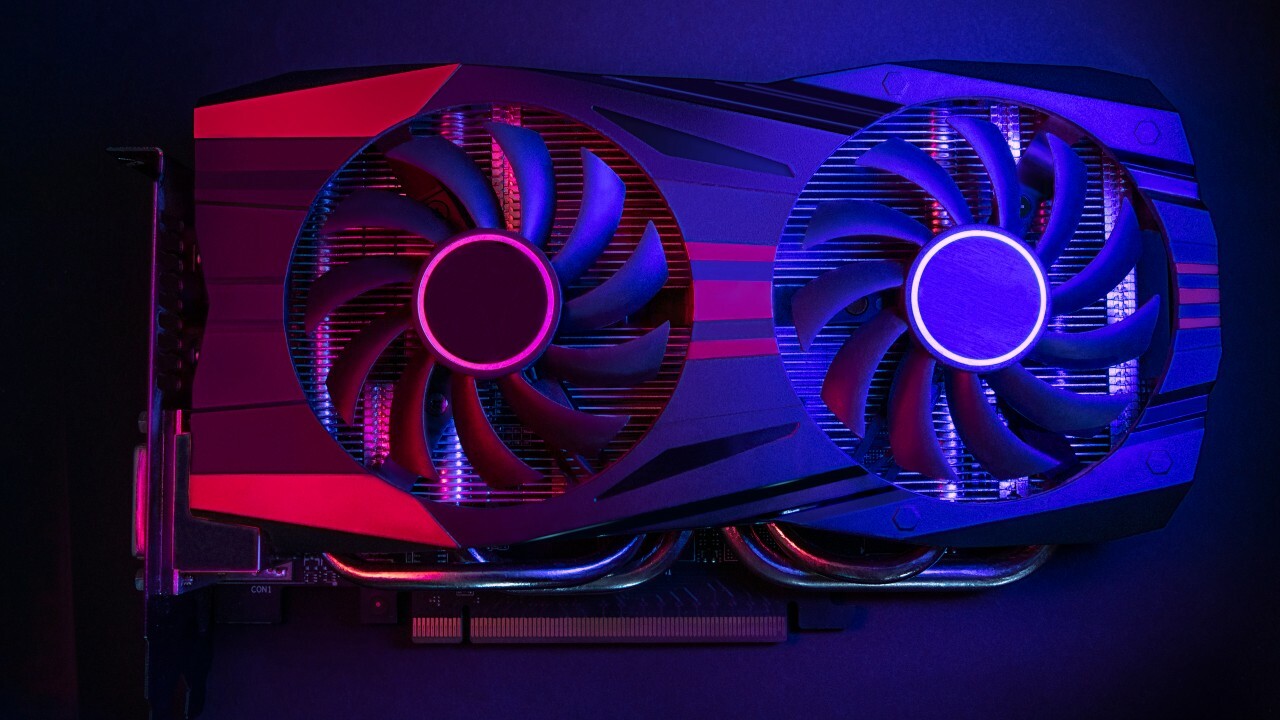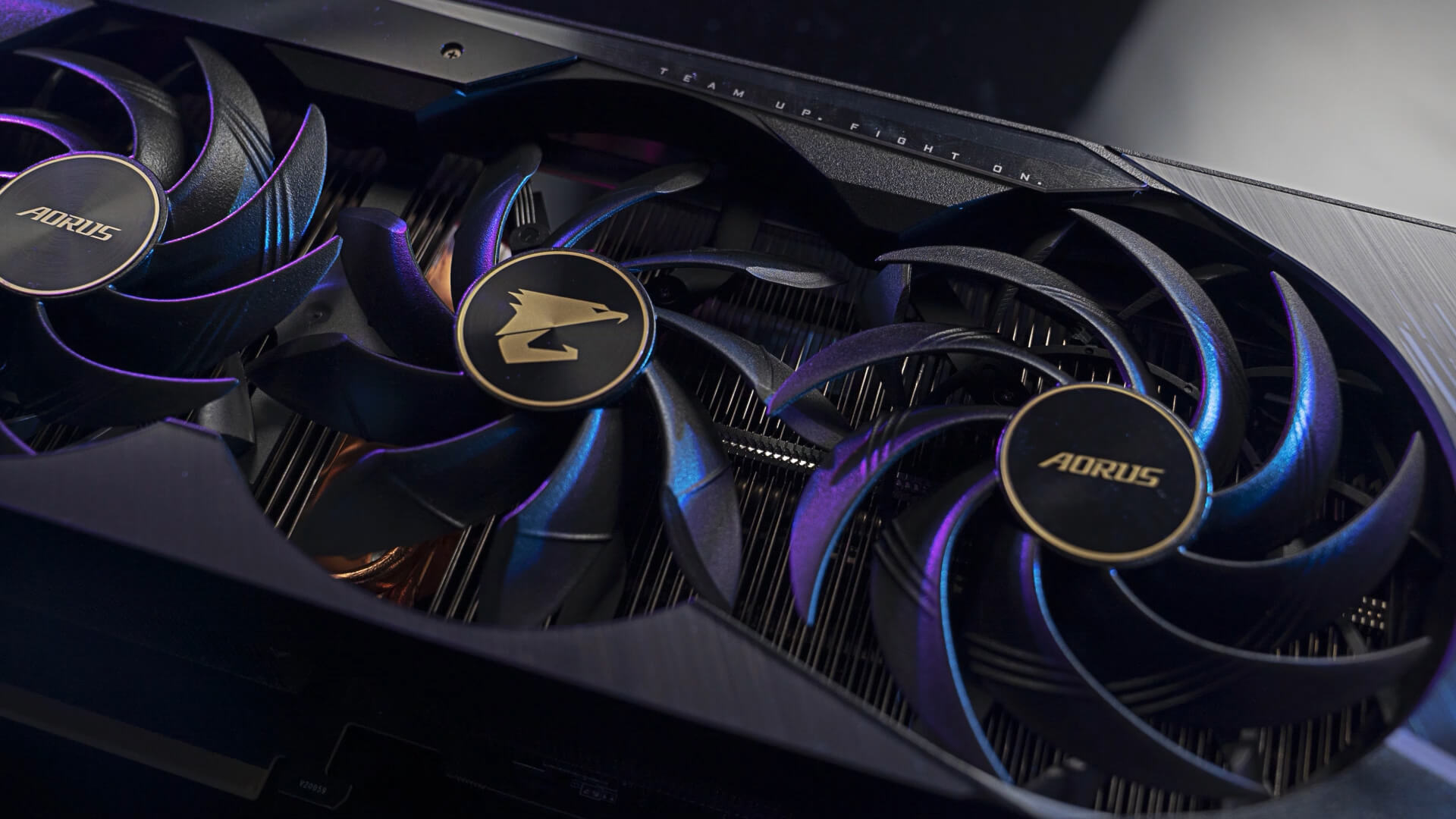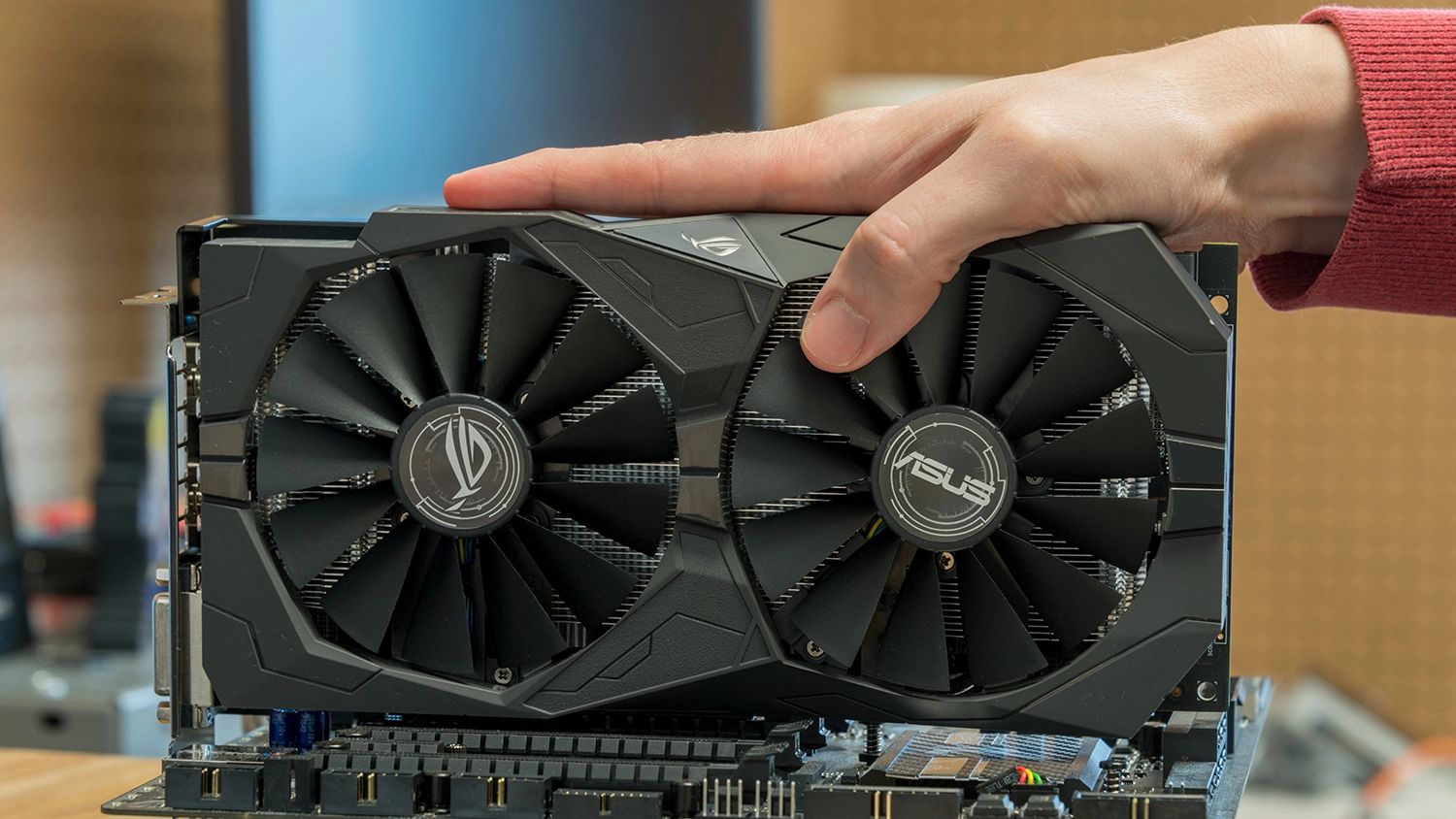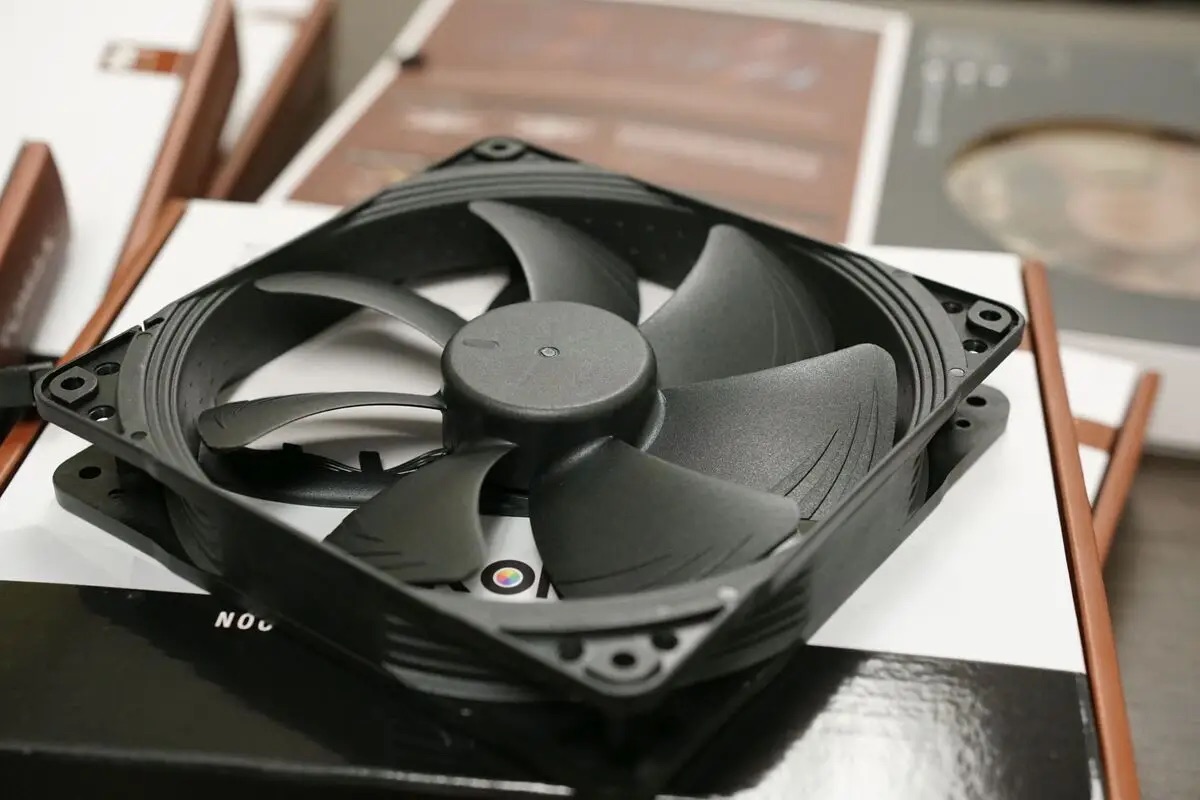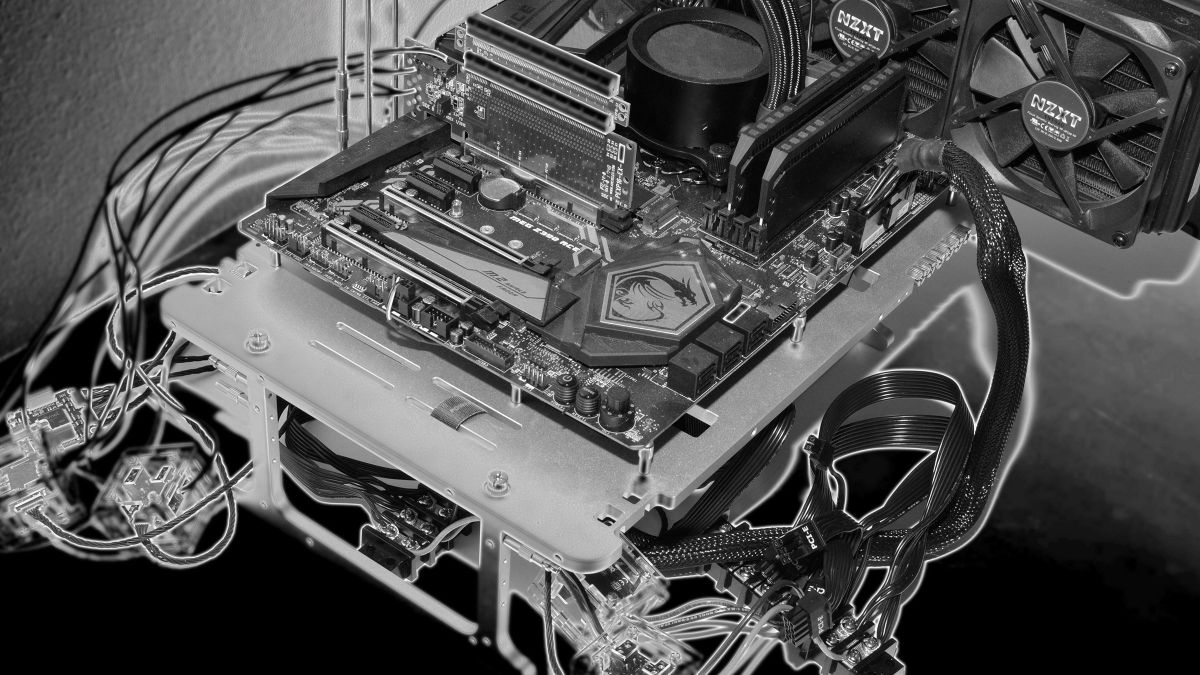Introduction
Welcome to the world of gaming and graphics processing units (GPUs). Your GPU plays a crucial role in delivering stunning visuals and smooth gaming experiences. One important aspect of your GPU’s performance is the cooling system, which includes the fans. However, you may have noticed that your GPU fans aren’t spinning, and this can be concerning. So, why aren’t your GPU fans doing their job? In this article, we will explore the various reasons behind this issue and provide potential solutions.
Before we dive into the possible reasons, it’s important to note that not all GPUs are designed to have their fans constantly running at full speed. Modern GPUs employ advanced cooling techniques like fanless mode and fan curve settings to optimize performance and reduce noise levels. So if your GPU fans are not spinning, it doesn’t necessarily mean that there’s a problem. We’ll discuss these possibilities and other potential causes in the sections below.
It’s worth mentioning that troubleshooting GPU fan issues can be technical. If you’re not confident in your computer knowledge, it’s always a good idea to consult with a professional or the manufacturer’s support team. However, if you’re willing to give it a shot, let’s explore the most common reasons why your GPU fans might not be spinning.
Reasons why GPU fans aren’t spinning
There are several potential reasons why your GPU fans may not be spinning. Let’s take a closer look at each possibility:
- Fanless mode: Some GPUs come with a fanless mode, where the fans remain inactive until a certain temperature threshold is reached. This mode is designed to provide a silent computing environment during lighter tasks or idle periods. If your GPU is running within normal temperature ranges, the fans may not spin.
- Fan curve settings: GPU fans can be controlled through fan curve settings in the graphics card’s software. These settings determine at what temperatures the fans should start spinning and at what speed. It’s possible that the fan curve has been set too aggressively or too conservatively, resulting in the fans not spinning when they should. Adjusting the fan curve settings can help resolve this issue.
- Overheating and thermal throttling: When a GPU reaches unsafe temperature levels, it may activate thermal throttling to protect itself from damage. In this scenario, the GPU will reduce its performance, which can result in the fans not spinning or spinning at a lower speed. Overheating can be caused by inadequate airflow, dust accumulation, or faulty cooling systems. Ensuring proper ventilation and cleaning the GPU can help prevent overheating.
- Faulty or disconnected fan cables: Sometimes, the issue lies in the physical connections between the fans and the GPU. Loose or disconnected fan cables can prevent the fans from spinning. Carefully inspect the fan connections and ensure they are securely plugged into the GPU. If necessary, reseat the cables to establish a proper connection.
- Software or driver issues: Occasionally, software or driver conflicts can interfere with the proper functioning of GPU fans. Outdated or incompatible drivers, conflicts with other software, or settings in third-party overclocking tools can all contribute to the fans not spinning. Updating drivers, reinstalling software, or adjusting settings can potentially resolve these issues.
- Faulty fan or GPU: In some cases, the fans themselves may be faulty or malfunctioning. This can happen due to wear and tear, defective components, or mechanical issues. Similarly, a malfunctioning GPU can cause the fans to stop working. If you’ve ruled out other possibilities and the fans still aren’t spinning, it’s advisable to contact the manufacturer’s support for further assistance or consider a professional repair.
By understanding these potential reasons, you can troubleshoot and identify the cause behind your GPU fans not spinning. In the next sections, we will explore possible solutions and preventive measures to address these issues effectively.
Fanless mode
Many modern GPUs come equipped with a fanless mode feature, which allows the fans to remain inactive until a certain temperature threshold is reached. This mode is designed to provide a silent computing experience during lighter tasks or idle periods.
If your GPU fans aren’t spinning, it’s possible that your GPU is operating within its normal temperature range, and therefore, the fans are not required. This is particularly common when performing basic tasks like web browsing, document editing, or watching videos. During these activities, the GPU doesn’t generate as much heat as it would during intense gaming or demanding computing tasks.
To determine if your GPU is in fanless mode, you can check the manufacturer’s documentation or use software utilities provided by the GPU manufacturer. These utilities often provide real-time monitoring of GPU temperatures and fan speeds. If the software indicates that the GPU is running within acceptable temperature ranges, you can rest assured that the fans are not spinning due to the fanless mode.
While fanless mode is a useful feature for reducing noise levels and power consumption, it’s important to note that prolonged use of fanless mode during heavy GPU usage may result in elevated temperatures, leading to thermal throttling and reduced performance. It’s recommended to monitor your GPU temperatures and ensure that they remain within safe limits, especially during intensive tasks.
If you prefer to have more control over your GPU’s cooling system, you may be able to adjust the fan settings manually. Check your GPU’s software or BIOS settings to see if there are options available for fan control. However, be cautious when modifying these settings, as improper adjustments can lead to overheating or premature fan failure.
In the next section, we will explore fan curve settings and how they can affect the behavior of your GPU fans.
Fan curve settings
GPU fans can be controlled through fan curve settings, which determine the speed at which the fans will operate at various temperature levels. These settings allow you to customize the fan behavior based on your preferences and cooling requirements.
If your GPU fans aren’t spinning, it’s worth checking the fan curve settings to ensure they are appropriately configured. In some cases, the fan curve may be set too conservatively, resulting in the fans not spinning even when the GPU temperatures rise.
Most GPU software utilities or third-party applications provide options to adjust the fan curve. By default, GPUs usually have a conservative fan curve that prioritizes quieter operation over maximum cooling performance. However, you can modify the fan curve to make the fans spin at lower temperatures, providing better cooling and potentially reducing GPU temperature levels.
To adjust the fan curve, you typically need to navigate to the GPU control panel or software utility. Look for options related to fan control or GPU settings, and you should find the fan curve adjustment feature. This may be represented graphically, allowing you to adjust the fan speed at specific temperature points.
It’s important to strike a balance between cooling performance and noise levels when modifying the fan curve. Increasing the fan speed too aggressively may result in louder fan noise, while setting it too low may compromise cooling efficiency. Experiment with different fan curve profiles and monitor the GPU temperatures to find a balance that suits your needs.
Additionally, some GPUs and software utilities offer predefined fan profiles for different scenarios, such as gaming, quiet operation, or overclocking. These profiles can provide a quick and easy way to optimize your GPU’s fan curve settings according to your intended usage.
Keep in mind that adjusting fan curve settings is generally safe and reversible. However, it’s recommended to approach it with caution and monitor your GPU temperatures closely to ensure that the modifications are effective and don’t result in overheating issues.
In the next section, we’ll explore the possibility of overheating and thermal throttling as factors that can cause GPU fans to stop spinning.
Overheating and thermal throttling
One of the most critical reasons why GPU fans may not be spinning is overheating. When a GPU reaches unsafe temperature levels, it activates a mechanism called thermal throttling. Thermal throttling is designed to protect the GPU from damage by reducing its performance and generating less heat.
If your GPU is overheating, the fans may either stop spinning or spin at a lower speed to compensate for the excessive heat. Overheating can occur due to various factors, including inadequate airflow within the computer case, accumulation of dust on the GPU and fans, or a faulty cooling system.
To prevent overheating and ensure that your GPU fans are actively cooling the graphics card, here are some steps you can take:
- Clean the GPU and fans: Dust and debris can accumulate on the GPU and obstruct air circulation, leading to higher temperatures. Use compressed air or a soft brush to carefully clean the GPU and its fans. Be sure to power off the computer and disconnect the power supply before performing any maintenance.
- Improve airflow: Ensure that your computer case has adequate ventilation and an efficient cooling system. You may consider installing additional case fans or upgrading existing ones to improve airflow. Proper cable management and removing any obstructions in front of intake fans can also enhance airflow within the case.
- Consider a GPU cooler upgrade: If you are consistently experiencing overheating issues even after cleaning and improving airflow, you may consider upgrading your GPU cooler. Aftermarket coolers with enhanced heat dissipation capabilities can help keep your GPU temperatures in check during demanding tasks.
Monitoring your GPU temperatures is crucial in identifying overheating issues. You can utilize software utilities or third-party applications that provide real-time temperature readings for your GPU. If you notice that your GPU is consistently reaching high temperatures, even with optimal airflow and a clean cooling system, it’s advisable to seek professional assistance or contact the GPU manufacturer for further guidance.
By addressing overheating concerns and ensuring proper cooling, you can optimize your GPU’s performance and maintain the functionality of its fans.
In the next section, we’ll explore the possibility of faulty or disconnected fan cables as a reason why GPU fans aren’t spinning.
Faulty or disconnected fan cables
If your GPU fans aren’t spinning, it’s possible that the issue lies with the physical connections between the fans and the GPU itself. Faulty or disconnected fan cables can prevent the fans from receiving power or communicating with the GPU, causing them to remain inactive.
To determine if this is the case, you’ll need to inspect the fan connections. Begin by shutting down your computer and unplugging it from the power source to ensure safety. Open your computer case and locate the GPU. Carefully check the fan cables to ensure they are securely connected to the appropriate ports on the GPU. It’s also important to examine the cables for any signs of damage or wear that could be causing a faulty connection.
If you find that the fan cables are loose or disconnected, reseat them by firmly pushing them back into the designated ports on the GPU. Ensure that the connection is secure but be cautious not to exert excessive force that could damage the ports or cables.
After reconnecting the fan cables, close the computer case and power on your system to see if the fans start spinning. It’s advisable to monitor the GPU temperatures and fan speeds through software utilities or the GPU manufacturer’s software to ensure that the fans are actively cooling the GPU.
If the GPU fans still aren’t spinning even after reconnecting the cables, it’s possible that the cables themselves are faulty or damaged. In such cases, it may be necessary to replace the fan cables or seek professional assistance for repair.
Before considering cable replacement, you can also try swapping the fan cables with those of another fan if possible. This will help determine if the issue lies with the cables or with the GPU itself. If the fans connected to the same cables from the GPU spin when swapped, it indicates that the cables are the problem.
If all attempts to resolve the issue with the fan cables are unsuccessful, it’s advisable to contact the GPU manufacturer’s support team for further guidance. They can provide specific troubleshooting steps or advise you on the best course of action, such as sending the unit for repair or replacement if needed.
In the next section, we’ll explore the possibility of software or driver issues affecting the functionality of your GPU fans.
Software or driver issues
Software or driver conflicts can also be a potential reason why your GPU fans aren’t spinning. Outdated or incompatible drivers, conflicts with other software, or settings in third-party overclocking tools can all affect the functionality of your GPU fans.
If you suspect that software or driver issues are causing the problem, there are a few steps you can take to troubleshoot the situation:
- Update drivers: Outdated drivers can often lead to compatibility issues and functionality problems. Visit the GPU manufacturer’s website to check for the latest drivers available for your specific GPU model. Download and install the updated drivers to ensure compatibility and to potentially resolve any issues related to your GPU fans.
- Reinstall software: Sometimes, conflicts between software applications can interfere with the proper functioning of GPU fans. Consider reinstalling the software associated with your GPU, such as the control panel or monitoring utilities. This can help fix any software-related conflicts that may be causing the fans to stop spinning.
- Adjust settings: Third-party overclocking software or GPU control panels may have settings that affect your GPU fans. Ensure that the settings within these applications are properly configured and not preventing the fans from spinning. Resetting the settings to default or adjusting them to a conservative state can help troubleshoot the issue.
- Perform clean driver installation: In some cases, remnants of old drivers can cause conflicts with the current ones. Use a tool like Display Driver Uninstaller (DDU) to completely uninstall the GPU drivers from your system before reinstalling them. This ensures a clean installation and reduces the chances of software-related issues affecting your GPU fans.
After updating drivers, reinstalling software, or adjusting settings, reboot your computer and observe if the GPU fans start spinning. Remember to monitor your GPU temperatures and fan speeds using software utilities or the GPU manufacturer’s software to ensure that the fans are operating as expected.
If the issue persists despite these efforts, it’s advisable to seek professional assistance or contact the GPU manufacturer’s support team. They can provide specific troubleshooting steps or recommend further actions to resolve the software or driver-related issues affecting your GPU fans.
In the next section, we’ll explore the possibility of a faulty fan or GPU causing the fans to stop spinning.
Faulty fan or GPU
If you have ruled out other potential causes and your GPU fans still aren’t spinning, it’s possible that there could be a hardware issue with either the fans themselves or the GPU.
Faulty fans can occur due to various reasons such as wear and tear, defective components, or mechanical issues. Over time, the bearings in the fans can deteriorate, causing them to seize or become noisy. In some cases, the fans may not receive the necessary power to spin due to a faulty connection or power delivery issue.
To determine if the issue lies with the fans, it’s advisable to physically inspect them. Carefully remove the GPU from the computer case and visually examine the fans for any signs of damage, such as broken blades or visible mechanical issues. If everything appears to be intact, try connecting the fans to a different power source, such as a different fan header on the motherboard or a dedicated fan controller. If the fans still don’t spin, it’s likely that they are faulty and will need to be replaced.
Alternatively, the problem may lie with the GPU itself. A malfunctioning GPU can impede the functionality of the fans, causing them to stop spinning. This can be due to issues with the GPU’s power delivery, temperature sensors, or internal components.
If you suspect that the GPU is faulty, it’s best to consult with the manufacturer’s support team or seek professional assistance. They can provide guidance on further troubleshooting steps or advise you on the best course of action, such as initiating a warranty claim or sending the GPU for repair.
Keep in mind that troubleshooting hardware issues can be complex and require technical expertise. If you are not comfortable with performing these steps or if your GPU is still under warranty, it’s recommended to contact the manufacturer for professional assistance.
By addressing potential issues with faulty fans or a defective GPU, you can work towards resolving the problem of your GPU fans not spinning and ensure optimal cooling and performance for your graphics card.
Now that we have explored the potential reasons behind GPU fans not spinning, as well as possible solutions, you are armed with the knowledge to troubleshoot the issue. Remember, each situation may be unique, so it’s important to carefully assess and diagnose the specific circumstances surrounding your GPU.+
Conclusion
The GPU fans not spinning can be a concerning issue for many users, as it may indicate a problem with the cooling system or the GPU itself. However, it’s essential to understand that not all GPUs are designed to have their fans constantly running at full speed. Some GPUs utilize features like fanless mode and customizable fan curve settings to optimize performance, reduce noise levels, and minimize power consumption.
If your GPU fans are not spinning, it’s important to first determine if your GPU supports fanless mode or if the fan curve settings may need adjustment. Checking the manufacturer’s documentation or using software utilities provided by the GPU manufacturer can help provide insights into these features.
However, if you’ve ruled out these possibilities and your GPU fans are not spinning despite increased temperatures, it may be indicative of other issues. Faulty or disconnected fan cables can prevent the fans from operating, and ensuring proper connections and inspecting for any damage is crucial.
Additionally, software or driver conflicts can interfere with the functioning of GPU fans. Updating drivers, reinstalling software, or adjusting settings can help resolve such issues.
If none of these remedies solve the problem, it may be a sign of a faulty fan or a malfunctioning GPU. In these cases, it’s recommended to consult with the manufacturer’s support team or seek professional assistance to diagnose and address the issue.
Troubleshooting GPU fans not spinning can sometimes be complex and require technical expertise. If you’re not confident in performing the necessary steps or if your GPU is still under warranty, it’s best to reach out to the manufacturer or a qualified professional for assistance.
By understanding the possible causes and taking appropriate steps to address them, you can help ensure the optimal performance and longevity of your GPU. Regular maintenance, such as cleaning the GPU and ensuring proper airflow within the computer case, can also contribute to the efficient operation of your GPU fans.
Remember, each situation is unique, and what works for one person may not work for another. With patience and careful troubleshooting, you can resolve the issue of GPU fans not spinning and continue to enjoy the benefits of your graphics processing unit.







